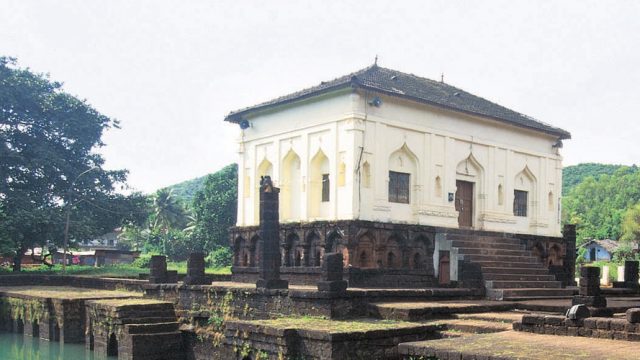Set on the edge of a large tank just outside Ponda town, the Safa Masjid, built in 1560, is the only surviving mosque of the 27 shrines that Ibrahim Adil Shah of Bijapur constructed. Broken columns surround the mosque, which once graced a garden with laterite walkways. It’s among the few ancient Muslim monuments left in a state that has a long association with Islam and its solitude is evidence of the energy with which the Portuguese battled Muslim rulers.
Muslims — who now form just over five per cent of the state’s population — have lived in Goa since at least the 10th century CE, when the Kadamba rulers urged merchants from East Africa and Arabia to settle in the state. But the kingdom’s affluence soon brought it to the attention of raiders. The raids, which started in the 10th century, reached a crescendo with strikes by Allauddin Khilji in 1294 and Muhammad Tughlaq in 1325. After briefly being held by the Vijayanagara Kingdom, Goa in 1358 came under the sway of Alla-ud-din Hasan Shah of the Bahmani family. When the Bijapur sultans took over from the Bahmanis in 1490, Yusuf Adil Shah started a construction campaign, building a mosque and a palace.
Ismail Adil Shah’s defeat in 1510, at the hands of the Portuguese Commander Alfonso de Albuquerque, had disastrous consequences for Goa’s Muslims. Angered that Muslims had helped Adil Shah’s defence, Albuquerque’s soldiers hunted them down viciously.




